Philly Archdiocese grappling with pensions for clergy
File under: Say it ain’t so! Financial irregularities? In the Catholic Church? Can’t be!
By John P. Martin
A pension fund for priests cited as a priority in a $200 million fund-raising campaign by the Archdiocese of Philadelphia has fallen precariously short of money, and church officials want parishes and retired clergy to help cover the shortfall.
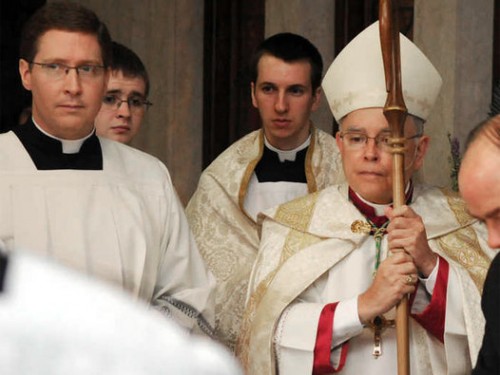 In meetings this spring, Archbishop Charles J. Chaput told priests the plan had been underfunded, poorly managed, and was spent on rising health-care costs for clergy, according to three priests who attended or were briefed on the talks. Chaput said the fund needed $90 million to be solvent but had less than $4.5 million, they said.
In meetings this spring, Archbishop Charles J. Chaput told priests the plan had been underfunded, poorly managed, and was spent on rising health-care costs for clergy, according to three priests who attended or were briefed on the talks. Chaput said the fund needed $90 million to be solvent but had less than $4.5 million, they said.
Clergy living at the archdiocese’s Delaware County retirement villa and other church-owned facilities are expected to contribute 40 percent of their pensions to the archdiocese, the priests said. And parishes’ annual assessments to the pension fund will rise from $6,700 to about $9,300 per priest, they said.
The changes come two years after the archdiocese ended a fund-raising campaign that made shoring up the priests’ pension plan one of its goals.
Kenneth Gavin, a spokesman for the archdiocese, said the policy requiring priests in church-owned facilities to refund portions of their pensions started in April. He would not discuss other changes or aspects of the pension plan, including what the archbishop said in his private meetings with clergy.
Gavin said the archdiocese planned to release “detailed financial reports” about its spending and costs this summer.
Rumblings about the pension troubles started last year, catching some priests by surprise.
“I was certainly horrified to learn that our pension fund was not secure, as would be any person who works in any organization,” said the Rev. Christopher Walsh, pastor of St. Raymond of Penafort in Mount Airy.
Walsh, who helped organize a fledgling association for archdiocesan priests, did not attend the meetings but said he learned about them from others who did. He said he hoped Chaput and his staff would “quickly establish a secure pension fund as a matter of justice.”
Dioceses across the country have faced similar financial struggles in recent years, compounded by dwindling attendance, aging clergy, and the economic downturn. But the impact has been acute in Philadelphia, where more than a million Catholics and hundreds of priests are also grappling with the fallout from clergy sex-abuse allegations. “The caveat for priests was always that the diocese was going to take care of you,” said one Philadelphia pastor nearing retirement who asked not to be identified discussing his employer’s finances. “None of us knew when Chaput arrived here 20 months ago that the diocese was in this bad of shape.”
Chaput himself didn’t know it, he conceded in an interview with The Inquirer in the fall. Only after moving from Denver in 2011, he said, did he realize that his predecessors in Philadelphia had relied on deficit-spending budgets for 15 years.
His tenure since has included a drumbeat of grim financial decisions: shuttering schools, closing or merging parishes, and selling off assets, including the cardinal’s residence on City Avenue and an oceanfront home for clergy in Ventnor, N.J.
The archdiocese has 425 active priests, most living in rectories and other church-owned facilities across the region. It also counts 161 retired priests on its rolls, and cares for many of them. If they remain healthy, priests typically retire at age 75 and qualify for an annual pension worth half their final salary, usually about $12,000, clergy members said.
Some leave to live with relatives or on their own in private homes. Others live in parish rectories, or at Villa St. Joseph, a church-owned retirement complex in Darby. But some of the older archdiocesan priests never registered for Social Security, and they end up retiring without a guaranteed government check or medical benefits, priests said.
Adding to the pension fund was one of six goals highlighted during the “Heritage of Faith, Vision of Hope” fund-raising campaign launched in 2009.
“Established in the early 1990s, the priests’ pension plan currently has over $10 million in assets,” literature for the campaign said. “In order to meet the anticipated needs of our retired priests, the pension plan requires an additional $40 million.”
That campaign sought $12 million for the pension plan and $3 million for renovations at Villa St. Joseph.
When it ended in early 2011, the campaign had yielded pledges of more than $220 million, church officials said. Earlier this year, they publicly acknowledged that collections on those pledges had fallen short, and they downgraded their projected receipts to less than $180 million.
Gavin, the spokesman, said $4 million in Heritage of Faith donations were transferred into the priest pension fund on Jan. 31. But he declined to elaborate or discuss updated totals for the rest of the money collected and spent, a topic the archdiocese is expected to address in its report this summer.
One suburban pastor said the redemption rate on pledges “took a dive” soon after the campaign ended, about the same time a Philadelphia grand jury report led to the arrest of four current or former priests and the suspension of two dozen others accused of child sex abuse or misconduct.
In his meetings with clergy, the archbishop specifically denied that their pension funds had been used to cover costs related to the suspensions or ensuing investigations, some of which are still open, the priests said.
Last year, Chaput reported that the archdiocese had spent more than $11 million through June 2012 related to those cases.
The abuse and misconduct allegations have had at least an indirect impact, pushing more priests into early retirement. Priests who have agreed to leave public ministry and accept a life of “prayer and penance” after being accused of sexual abuse or misconduct are eligible to collect their pensions, according to information on the archdiocese’s website. At least 19 priests are now living under such restrictions, most on the same campus as Villa St. Joseph’s.
At least 25 other priests from the Archdiocese of Philadelphia have been laicized or voluntarily left the priesthood in the last decade. Church officials have not disclosed how many of those defrocked priests, some of whom were in the clergy for decades, collect a pension.
Earlier this month, Gavin declined another request for that information.
One pastor who attended a meeting with Chaput said he believed the archbishop was doing everything possible to keep them informed and find solutions to the financial mess he inherited. “I have total confidence that we’ve been given a correct and honest appraisal of things,” the priest said. Rita Schwartz, union president for non-religious teachers in archdiocesan schools, said she had heard about the troubles with the priests’ pensions, but was confident that pensions for archdiocesan teachers, which are managed through a separate trust, were stable.
Clergy pension funds have plunged in Boston and other dioceses, according to Charles Zech, who directs the center for the study of church management at Villanova University. Zech said he had not examined the financial situation in Philadelphia but wasn’t surprised to hear about the pension-fund troubles.
This archdiocese, he said, seems to have been battered by “a perfect storm of bad things happening at once.”
Correction: This story was corrected to reflect that the $11 million cost to the Archdiocese stemming from the sexual abuse scandal was not covered by insurance.
Complete Article HERE!
Vatican faces ‘revenge’ rent-boy scandal
BY: JAMES BONE
THE Vatican is bracing itself for a rent boy scandal after a convicted pedophile priest apparently sought vengeance by informing on other child abusers in the Roman clergy.
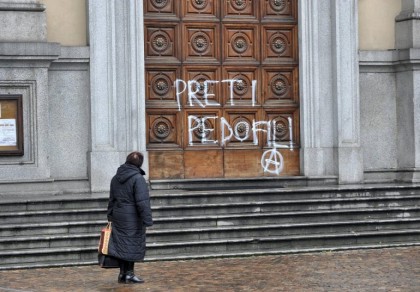 Don Patrizio Poggi, who served a five-year sentence for abusing five 14 and 15-year-old boys at his parish on the outskirts of the Italian capital, has reportedly handed names to police. So far, four people have formally been placed under investigation by Rome magistrates.
Don Patrizio Poggi, who served a five-year sentence for abusing five 14 and 15-year-old boys at his parish on the outskirts of the Italian capital, has reportedly handed names to police. So far, four people have formally been placed under investigation by Rome magistrates.
The suspects are said to include a monsignor who is currently the secretary of an important bishop. Also being investigated is a former Carabinieri police officer suspected of recruiting under-age boys for the alleged prostitution ring.
The brewing scandal comes just weeks after Pope Francis confirmed the existence of a “gay lobby” in the Vatican to a visiting Latin American church group.
The apparent network inside the supposedly celibate and staunchly anti-homosexual Church is one reason why Pope Francis is working on a thorough house-cleaning of the Roman curia. Vatican watchers believe a far-reaching reshuffle of top posts is imminent. Cardinal Giuseppe Bertello, current head of the governorate that runs the Vatican city-state, is tipped to take over from the powerful but divisive Vatican secretary of state, Cardinal Tarcisio Bertone.
The latest scandal traces its roots to the criminal case against Poggi, now 46, who was convicted in 1999 of abusing boys at his St Philip Neri church in the Rome suburb of Primavalle.
After serving his sentence, the disgraced priest sought reinstatement by the Vatican but was denied a post. In revenge, he is said to have gone to police with one of the alleged “rent boys” serving priests.
According to Italian press reports, Poggi named 20 people as being involved in the prostitution ring.
Complete Article HERE!
Columnist and Activist Both Criticize Cardinal George on LGBT Issues
File under: Francis, The Killer Fruit
By Francis DeBernardo
Chicago’s Cardinal Francis George has been in the news lately not only for his vocal opposition to Illinois’ marriage equality bill, but because he recently denied communion to a gay Catholic activist at a Mass celebrating the Archdiocesan Gay and Lesbian Outreach in his city.
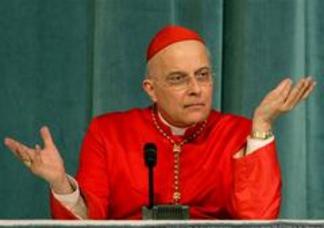
Robert McClory, a columnist for The National Catholic Reporter, took apart an essay about marriage equality written by George in the Chicago archdiocesan newspaper. McClory exposes some of George’s fear-mongering rhetoric, not only on marriage equality, but also on the issue of religious liberty, which seems to be one of George’s main purposes in writing the column.
For example, McClory is justifiably incredulous at George’s depiction of how secular society is “marginalizing” Catholics. McClory writes:
“George then launches out into the deep about the separation of religious faith from public life. He blames John F. Kennedy for starting a roll down the slippery slope and worries Catholics will be eventually barred from federal judgeships, medical schools, editorial offices at major newspapers, the entertainment world and university faculties.
” ‘If Catholics are to be closeted and marginalized in a secularized society, Catholic parents should prepare their children to be farmers, carpenters and craftsmen, small business people and workers in service industries,’ occupations that ‘do not immediately impact public opinion.’ What?”
McClory hits the nail on the head in his concluding paragraph which points out George’s true blindspot:
“Unfortunately, what Cardinal George cannot consider is the possibility that Catholics at the grass-roots level are coming to understand new and different ways to welcome to the table those previously excluded. Many, including not a few theologians, propose that the essence of marriage is the love and permanent commitment of two persons to one another — period. As that conviction matures in time, I believe the church will have to make accommodations with its implications, just as Christians in the time of Galileo had to reinterpret so much they and their ancestors had taken for granted as irreversibly, dogmatically true: the movement of the earth, the sun, moon and stars. It was for many a painful, revolutionary process. And the one believing Christians face now will be for some no less painful and revolutionary. But it must be done, lest the Catholic church disintegrate into a closed, inconsequential cult.”
McClory doesn’t comment on what I consider George’s greatest errors in his essay. Speaking of marriage equality advocates, George states:
“Further, the claim that one is not equal under law is powerful in our society; it makes one a victim. And the claim that one is being demeaned and personally wounded is even more powerful evidence of victimization. “
Yet, isn’t that what so many Catholic bishops are doing when they claim that their religious liberty is being curtailed because of pro-LGBT laws? Aren’t they claiming “victim” status? Isn’t George guilty of exactly the thing he accuses his opponents of doing?
The cardinal presided at the 25th anniversary Mass for Chicago’s Archdiocesan Gay and Lesbian Outreach (AGLO), and he was greeted by about 25 protesters from the Gay Liberation Network and the Rainbow Sash Movement (RSM). The latter group is composed of Catholics who present themselves for communion while wearing a rainbow sash, indicating that they believe in the full equality of LGBT people and that they disagree with the hierarchy’s prohibition of sexual activity between person’s of the same gender. When the RSM’s director, Joe Murray, went to the cardinal for communion, he was refused.
Joe Murray
The Windy City Times reported:
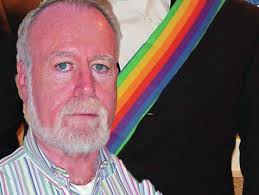 “Murray stood up with his back to Cardinal George during parts of the Mass, and then he went up with the estimated 200 others in attendance to receive communion. George refused him, and Murray walked away with his hands open and empty, showing the congregants that he had been denied.
“Murray stood up with his back to Cardinal George during parts of the Mass, and then he went up with the estimated 200 others in attendance to receive communion. George refused him, and Murray walked away with his hands open and empty, showing the congregants that he had been denied.
“But in an emotional show of solidarity, Brenna C. Cronin, who had already received her communion as part of the church choir, went back up and took another communion wafer (called a Host) and brought it to Murray herself.
” ‘One of my brothers, a member of my community, who is a full and equal member of the body of Christ, was denied communion. So I got back in line and I brought him communion, as I would for anyone else,’ Cronin told Windy City Times after the Mass. Cronin, who is a lesbian, has been involved with AGLO for two years and is also a cantor.
” ‘I was denied communion by the Cardinal,’ Murray said after. ‘I turned to Christ, I walked back open handed, and showed the community that I was denied communion, and Christ, in his mercy, sent me a priest [Cronin] to give me communion.’ “
The news story indicates that some in the congregation supported Murray’s action, while others were critical of it. You can read the entire news account HERE. It contains additional comments from both George and Murray.
Complete Article HERE!
Catholic Church apologizes for lack of sympathy over New Orleans gay bar fire that killed 32
The Catholic Archdiocese of New Orleans has apologized for its lack of sympathy 40 years ago over the Upstairs Lounge bar fire that killed 32, while the city’s mayor has marked the anniversary with an official certificate
BY ANDREW POTTS
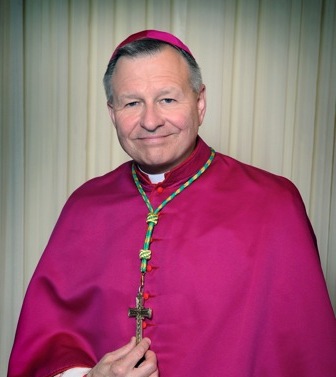 New Orleans Catholic Archbishop Gregory Aymond has apologized for his church’s silence 40 years ago when 32 people were burnt to death in the Upstairs Lounge bar fire.
New Orleans Catholic Archbishop Gregory Aymond has apologized for his church’s silence 40 years ago when 32 people were burnt to death in the Upstairs Lounge bar fire.
On 24 June, 1973, staff at the Upstairs Lounge bar answered the door only to find it engulfed with flames.
Staff managed to evacuate 30 people from the building while the fire spread but 29 people died in the 16 minute blaze and three died later from their injuries. A further 15 people were injured in the blaze.
It is believed that Rodger Dale Nunez, who was suffering from a brain tumor, lit the fire. He was questioned by police but escaped after he was hospitalized for convulsions and was never recaptured before he killed himself a year later.
Church and city officials ignored the tragedy which is the worst mass killing of LGBT people in US history.
However on the eve of the 40th anniversary of the fire, Archbishop Aymond released a statement to TIME magazine apologizing for the church’s silence at the time.
‘In retrospect, if we did not release a statement we should have to be in solidarity with the victims and their families,’ Aymond told TIME magazine.
‘The church does not condone violence and hatred. If we did not extend our care and condolences, I deeply apologize.’
Three of the dead were never identified and many relatives of the victims refused to claim their ashes out of homophobic shame.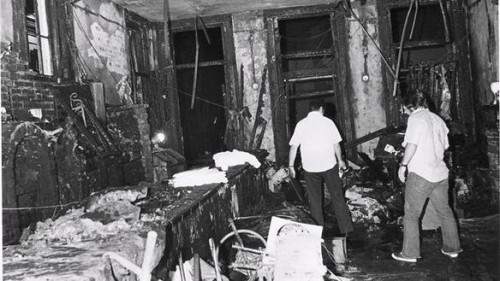
New Orleans mayor in 1973, Moon Landrieu, ignored the tragedy, but his son, the present mayor of New Orleans, issued an official certificate commemorating the anniversary this year.
Events planned to mark the anniversary include a lecture on the tragedy at the Historic New Orleans Collection and a traditional New Orleans style jazz funeral march from the Collection to the site of the fire.
A musical about the fire is also being staged.
Time published a feature on the fire this week and a documentary about the fire, Upstairs Inferno, is currently in pre-production.
Complete Article HERE!
